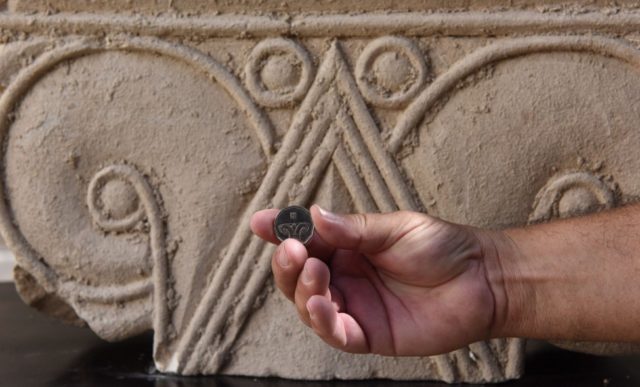Sept. 3 (UPI) — Archaeologists have unearthed the remnants of an ancient royal mansion in Jerusalem.
“The column capitals, identified with royal construction of the First Temple period, are the most beautiful and impressive that have been uncovered to date,” archaeologists announced in a news release.
The discovery, which includes several intricately carved, soft limestone artifacts, portions of a once-magnificent structure, was revealed to the public at an event on Thursday.
The stone capitals, the tops of columns, are representative of an architectural style called Proto-Aeolian, one of the most important styles of the First Temple period, which lasted from 1000 to 586 BC.
In addition to carved stone column capitals, archaeologists also found lavish window frames and balustrades, the shafts that form a bannister.
“This is a first-time discovery of scaled-down models of the giant Proto-Aeolian capitals, of the kind found thus far in the Kingdoms of Judah and Israel, where they were incorporated above the royal palace gates,” Yaakov Billig, director of the Israel Antiquities Authority’s excavation, said in a news release. “The level of workmanship on these capitals is the best seen to date, and the degree of preservation of the items is rare.”
While the column capitals were found well-preserved, having been hidden away, the rest of the building was destroyed several thousand years ago. Archaeologists suspect it was demolished during the Babylonian destruction of Jerusalem in 586 BC.
“At this point it is still difficult to say who hid the capitals in the way they were discovered, and why he did so, but there is no doubt that this is one of the mysteries at this unique site, to which we will try to offer a solution,” Billig said.
Researchers also can’t say for certain who occupied the ancient mansion — perhaps, one of the Kings of Judah or a family of nobility.
Archaeologists suggest the boldness and architectural magnificence of the stone structures serves as evidence of Jerusalem’s rehabilitation in the wake of the Assyrian siege of the city in 701 BC.
They are proof, they said, that by the time of the mansion’s construction, the city’s inhabitants and its buildings were no longer relegated to the confines of its protective walls.
“We reveal villas, mansions and government buildings in the area outside the walls of the city,” Billig said. “This testifies to the relief felt by the city’s residents and the recovery of Jerusalem’s development after the Assyrian threat was over.”

COMMENTS
Please let us know if you're having issues with commenting.